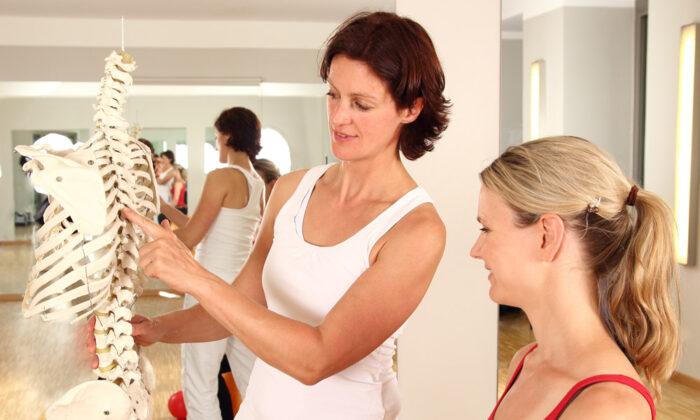The Earliest Sign of Parkinson’s Disease
It is well known that Parkinson’s disease can cause dyskinesia, that is, uncontrolled and involuntary movements like twitches.In fact, Parkinson’s disease has another early symptom. That is, most people with Parkinson’s disease have problems with their sense of smell five to 10 years before the onset of the disease’s obvious symptoms such as stiffness in the limbs.
In addition, Parkinson’s disease has an even earlier sign.
There is a sleep disorder called the rapid eye movement (REM) sleep behavior disorder. People with this sleep disorder can often punch and kick during sleep, and they often dream of arguing with others, being chased, or facing other stressful situations. Their physical movements in their sleep can even cause injury to themselves or others beside them.
“This is a common occurrence in the elderly, but it may be a precursor to Parkinson’s disease, symptoms which can occur 10 or 15 years before the onset of the disease,” said Dr. Jyh-Haur Lu, a neurologist and director of the Jyh-Haur Lu Neurology Clinic in New York.
Dr. Lu pointed out that only a small percentage of people with olfactory disorders develop Parkinson’s disease, but if a patient also has REM sleep disorder, the chance of developing Parkinson’s disease is as high as 65 percent. So, he does not ignore the problems of smell and sleep during his medical consultation.
People with Parkinson’s disease may also suddenly lose a lot of weight.
According to Dr. Jui-Cheng Chen, director of the Department of Neurology, China Medical University Hospital, although the main symptom of Parkinson’s disease is dyskinesia, it will also affect gastrointestinal motility, resulting in malabsorption. And since some side effects of drugs affect appetite, these patients are prone to sudden weight loss.
1. Tremors in the limbs: The patient has tremors that are regular at rest and may worsen with stress. However, the tremors don’t occur during sleep.
3 Methods to Prevent and Improve Parkinson’s Disease
1. Practicing traditional Chinese qigongLike most diseases, Parkinson’s disease is difficult to treat with medication alone, and the patient’s daily exercise also plays an important role in improving the disease. At the annual symposium of the American Parkinson Disease Association, medical experts recommended two exercises for Parkinson’s patients: walking and Tai Chi.
Walking has been proven to improve the balance of Parkinson’s patients. It may be surprising that ancient Chinese qigong methods are being promoted by the Western medical community. In fact, many studies have shown the positive effects of Tai Chi and qigong on Parkinson’s disease symptoms.
In 2017, researchers from Harvard University published a paper in the medical journal Parkinsonism and Related Disorders. This paper analyzed the effects of 21 previous studies of more than 700 Parkinson’s patients practicing Tai Chi and qigong, showing that Tai Chi and qigong were beneficial in improving patients’ quality of life, motor symptoms, and balance.
Given the obvious benefits of these simple exercises in improving disease symptoms, Dr. Lu advised Parkinson’s patients to “get as much exercise as possible.”
The New England Journal of Medicine has published a special case study about a man with severe Parkinson’s disease who could barely walk. However, when he got on his bicycle, he could perform many activities well with ease, including making turns, moving up and down from the seat, propelling the bike forward and getting off.
In this review, most of the subjects used recumbent or stationary bicycles, which are easier to ride and less susceptible to balance than regular bicycles.
There are 100 trillion normal bacteria in the human intestines, which participate in the body’s metabolism, defend against pathogenic bacteria, and regulate the body’s immune function.
“In the past, when people spoke of neurological diseases, they wouldn’t associate them with intestinal bacteria,” Dr. Lu said. In recent years, many studies have revealed a link between enteric bacteria and brain diseases, including Parkinson’s disease.
For example, researchers have extracted intestinal bacteria from Parkinson’s disease patients and healthy humans respectively and transplanted them into lab mice with Parkinson’s disease, and found that samples from Parkinson’s disease patients further exacerbated motor impairment in the lab mice.
Studies with Parkinson’s patients have also found a correlation between the disease and intestinal microbiome. The researchers believe that intestinal bacteria may influence the development of brain disease through a special gut-brain axis feedback mechanism.
Early Detection of Parkinson’s Disease Can Slow Down the Rate of Neurodegeneration
Parkinson’s disease is a neurological disease that usually occurs among the elderly, with the average age of onset being approximately 50 to 60 years old.However, nowadays, the age of the onset of Parkinson’s disease is getting younger. This is mainly due to three factors: irregular work and rest schedules, previous brain injuries, and family health history. According to Dr. Chen, people who have been in car accidents, boxers, and professional sports athletes may develop this after head trauma. People who develop early onset Parkinson’s usually are not genetic cases.
Although Parkinson’s disease is irreversible, a patient’s neurodegeneration is relatively slow, and it usually takes years for the disease to deteriorate to the point of incapacity.
Therefore, it is best to detect and treat the disease early to improve symptoms and slow down the rate of deterioration. If the disease is detected at too late a stage, it will be more difficult to treat.
1. Make the “OK” gesture with the right hand. Open and close the index finger and thumb (finger tapping) 25 times.
What Should Patients Pay Attention to in Parkinson’s Disease Treatment?
There haven’t been any major breakthroughs in the treatment of Parkinson’s disease. At present, levodopa (a dopamine drug) is still the most effective drug.Parkinson’s patients have reduced production of the neurotransmitter dopamine in the brain. Levodopa is the most direct treatment for Parkinson’s disease, as it replenishes the dopamine in the brain. Levodopa therapy can also slow down the progression of Parkinson’s disease.

“In the ELLDOPA study, two groups of Parkinson’s patients received different treatments: one group were given levodopa and the other group weren’t. After five years, the disability index was lower in the levodopa-treated group when compared. The study showed that levodopa has a protective effect on Parkinson’s patients,” said Dr. Lu.
However, there is a “honeymoon” phase in levodopa therapy that makes many patients apprehensive about starting this therapy.
The so-called honeymoon phase of the levodopa treatment refers to the first few years of Parkinson’s disease, when a relatively small dose of the drug is needed to achieve consistent and stable treatment results. However, after several years, the drug becomes much less effective than before, and the dosage needs to be increased. As a result, many people believe that levodopa treatment should be put off until the disease becomes severe, hoping to delay the “honeymoon phase.”
“In fact, this idea is rather outdated and has basically been debunked.” Dr. Lu explained that the “honeymoon phase” of levodopa treatment is closely related to Parkinson’s disease itself. With or without medication, the “honeymoon phase” will pass as the disease progresses.





